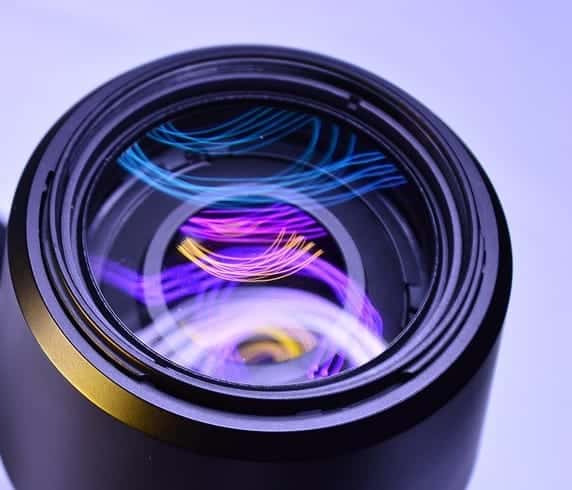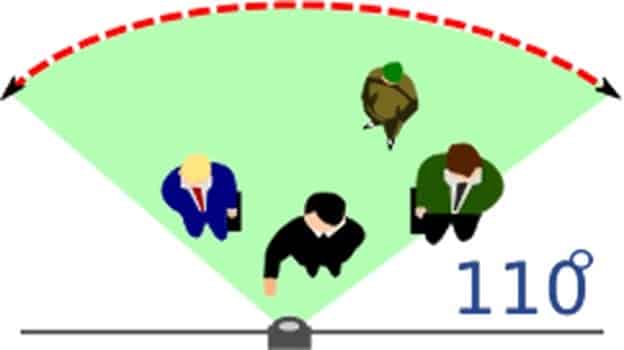Fixed Lens, Varifocal Lens, PTZ? Which is the Correct Choice?
https://www.taylored.com/solutions/security/video-surveillance-systems//
One of the most important considerations when choosing a security camera is verifying the camera will provide the desired coverage of the area being monitored. Camera location and the distance from the monitored area play an integral part of the camera view. Often, the camera location can be restricted by type of construction, cable pathway, and objects blocking the sight line of the camera. By carefully giving consideration to lens choice, many of the obstacles can be addressed, diminished, or eliminated. Knowing the characteristics, advantages and disadvantages of each type of security camera lens can help address issues when they occur.
Types of Lenses:
There are three basic types of lenses for a camera- fixed, varifocal, and zoom. Each type of lens has characteristics that differ from the others, and each has their place, depending on the application. Focal length and the capability of adjustment of the focal length, determine what type of lens the camera has. Focal lengths are expressed in millimeters and the smaller the focal length, the larger the field of view. For security cameras, this affects the horizontal and vertical fields of view, however, under normal applications, it is the horizontal field of view that is of most interest.
Fixed Lenses – This type of lens has a set focal length. These lenses have a fixed horizontal field of view, and you must physically move the camera location closer or further from the monitored area to change the amount of detail that can be viewed. Fixed lenses work well in a general observation type of applications or when the monitored area is small, such as a lobby or entrance. Fixed lenses are also the least costly lens.
Varifocal Lenses – Lens with an adjustable focal length. One common adjustment for a varifocal lens is from 3mm to 9 mm. What this adjustment allows you to do is manually adjust the horizontal field of view at the camera, thereby letting you position a camera at a distance from the monitored area and then narrowing the field of view to gain more detail in the image. This is very important when there are restrictions on where you can mount the camera . This is a very common situation in video surveillance design when detail of a scene is needed, at a gate for example, but the gate is 50 feet from the building.
Zoom Lens – Very similar to varifocal lenses, with two exceptions. First, zoom lenses are typically motorized. This allows you the ability adjust the focal length of the lens from a user interface such as a joystick, or from the video management software. Secondly, the range of adjustment for a security camera zoom lens is typically much larger than for a varifocal lens. As an example, one camera model has a focal length adjustment from 4.3 mm to 129 mm. Zoom lens adjustments are typically expressed as an optical zoom ratio, which is the difference between the smallest and largest focal lengths. With the above example, that would be from 4.3 mm to 129 mm, giving the camera a 30x optical zoom ratio (4.3 mm * 30=129 mm). Security cameras with zoom lens allow a designer to install a camera and then zoom the lens to a distant area for monitoring with great detail. One example of this would be to install a camera on the exterior of a building and then zoom the lens to a driveway 150’ away, allowing enough detail to identify a car as it turns into the driveway. This results in substantial savings on installation costs compared to installing a camera out at the gate 150’ away. Even though the zoom lens is typically the most expensive when compared to fixed lenses and varifocal lenses, in the correct application, it can be the most affordable.
The three basic lens types, fixed, varifocal, and zoom each have applications in which they provide the best possible image and detail for the area being monitored. Fixed lenses provide lower cost but have to be physically moved to provide changes in the field of view. Varifocal lenses typically provide more flexibility with installation positions because you can adjust the field of view, but at a higher cost than fixed. Zoom lenses provide the largest field of view variations but at a higher cost then either fixed or varifocal lenses. A video surveillance system designer can assist with making the correct choice between fixed, varifocal, and zoom lenses ensuring you receive a system that meets or exceeds your expectations. Taylored Systems can provide that service for you. Call Taylored Systems or visit our security video surveillance systems page for additional information.


